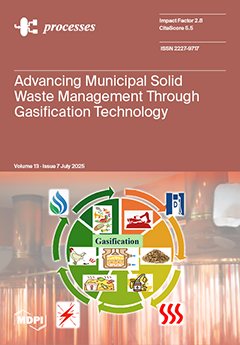Capturing CO
2 emitted by coal chemical enterprises and injecting it into oil reservoirs not only effectively improves the recovery rate and development efficiency of tight oil reservoirs in the Ordos Basin but also addresses the carbon emission problem constraining the development of the region. Since initiating field experiments in 2012, the Ordos Basin has become a significant base for CCUS (Carbon capture, Utilization, and Storage) technology application and demonstration in China. However, over the years, projects have primarily focused on enhancing the recovery rate of CO
2 flooding, while issues such as potential reservoir damage and its extent have received insufficient attention. This oversight hinder the long-term development and promotion of CO
2 flooding technology in the region. Experimental results were comprehensively analyzed using techniques including nuclear magnetic resonance (NMR), X-ray diffraction (XRD), scanning electron microscopy (SEM), inductively coupled plasma (ICP), and ion chromography (IG). The findings indicate that under current reservoir temperature and pressure conditions, significant asphaltene deposition and calcium carbonate precipitation do not occur during CO
2 flooding. The reservoir’s characteristics-high feldspar content, low carbon mineral content, and low clay mineral content determine that the primary mechanism affecting physical properties under CO
2 flooding in the Chang 4 + 5 tight sandstone reservoir is not, as traditional understand, carbon mineral dissolution or primary clay mineral expansion and migration. Instead, feldspar corrosion and secondary particles migration are the fundamental reasons for the changes in reservoir properties. As permeability increases, micro pore blockage decreases, and the damaging effect of CO
2 flooding on reservoir permeability diminishes. Permeability and micro pore structure are therefore significant factors determining the damage degree of CO
2 flooding inflicts on tight reservoirs. In addition, temperature and pressure have a significant impact on the extent of reservoir damage caused by CO
2 flooding in the study region. At a given reservoir temperature, increasing CO
2 injection pressure can mitigate reservoir damage. It is recommended to avoid conducting CO
2 flooding projects in reservoirs with severe pressure attenuation, low permeability, and narrow pore throats as much as possible to prevent serious damage to the reservoir. At the same time, the production pressure difference should be reasonably controlled during the production process to reduce the risk and degree of calcium carbonate precipitation near oil production wells.
Full article





